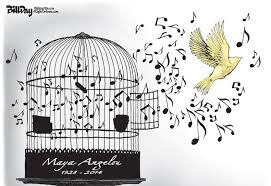
Maya Angelou was catapulted into the pedestal of literary stardom as she made a great mark during the time wherein Human Rights was at the peak of influencing motivated and purpose-driven individuals.
Maya Angelou was born in the year 1928. She was renowned in the United States of America for her creative inclination on writing essays, memoirs and various forms of Poetry.
Despite her death in the year 2014, her legacy continued through the poetic work that she made in the year 1969 entitled: “I Know Why The Caged Bird Sings”.
The poem depicts a direct story of her earlier life phase that was disrupted at a tender state because of sexual abuse. Because of that horrendous disruption during her early life, Maya Angelou resorted to writing poetry as a means of coping from that experience and in moving forward with life, positively.
In an in-depth sense, “I Know Why the Caged Bird Sings” features a contrasting element between two birds and in the perspective of their individual lives, wherein the first bird is free which makes it fly whenever it desires, while on the other hand, the second bird is caged which impedes it to fly freely.
In a realistic sense, in the point of view of the American society during Maya Angelou’s lifetime, the free bird is a vivid representation of the White Americans; while on the contrary, the caged bird is the visible representation of the black Americans.
Below is a portion of the impactful poem of Maya Angelou as follows:
The caged bird sings
with a fearful trill
of things unknown
but longed for still
and his tune is heard
on the distant hill
for the caged bird
sings of freedom.
As a means of emphasis, the holistic imagery of the poem can be greatly adapted in situations wherein the entirety of the marginalized groups are clumped in a hostage that are brought by the impartial systems, so to speak.
In entirety, “Caged Bird” gives the reader a dual challenge of both taking action and in hearing the song, clearly.
Source:
Recited here:

